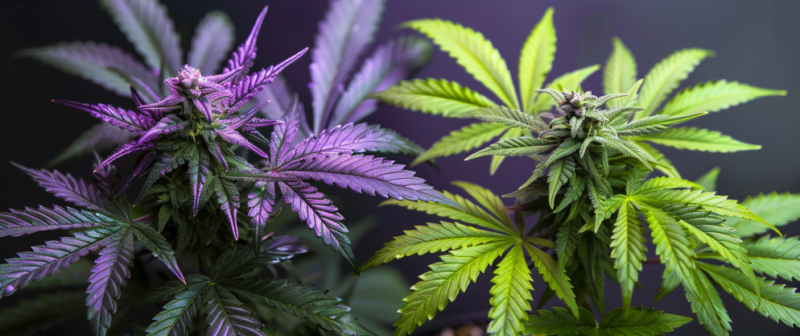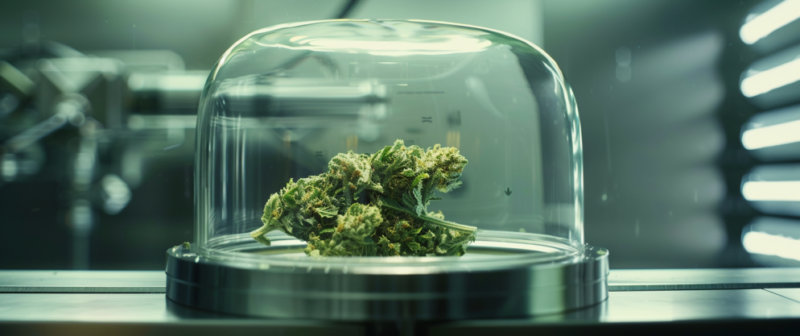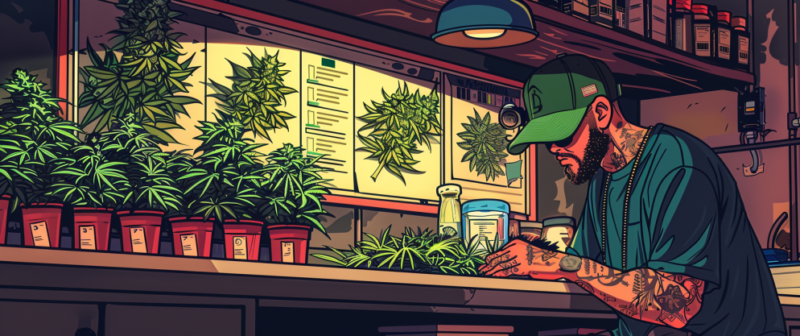Are you curious about how long it takes for edibles to kick in? If so, you’ve come to the right place. In this article, we will dive into the world of edibles and explore everything you need to know about their onset time. From understanding the science behind edibles to exploring the factors that influence their effects, we’ve got you covered. So let’s get started and uncover the secrets of this exciting cannabis product.
Understanding Edibles and Their Effects
Before we dive into the timeline for edibles to kick in, let’s take a moment to understand what edibles are and how they work. Edibles are orally consumed cannabis products that come in various forms, such as gummies, chocolates, or baked goods.
The science behind edibles is fascinating. When you consume an edible, the active compounds in cannabis, such as THC or CBD, are metabolized by your liver. This process converts the cannabinoids into a more potent form, resulting in a longer-lasting and more intense experience compared to other consumption methods like smoking or vaping.
What are Edibles?
Edibles are delicious cannabis-infused products that come in a wide variety of flavors and forms. From fruity gummies to decadent chocolates, there is something for everyone. With edibles, you can enjoy the benefits of cannabis in a discreet and convenient way.
Imagine biting into a mouth-watering chocolate bar, not only savoring the rich flavor but also unlocking the potential of cannabis. Edibles offer a unique experience by combining the pleasure of indulging in tasty treats with the therapeutic effects of cannabinoids.
Whether you prefer the tangy burst of a fruit-flavored gummy or the smooth texture of a creamy chocolate, edibles provide a diverse range of options to suit your taste buds and desired cannabis experience.
Related Post:
- How Long Do Delta 8 Edibles Take To Kick In
- Dosing Delta 8 Edibles – How Much Should You Actually Take?
The Science Behind Edibles
When you ingest an edible, it enters your stomach and then moves to your liver, where the cannabinoids are metabolized. This process converts THC into a compound called 11-hydroxy-THC, which has a more potent psychoactive effect. It takes time for this conversion to occur, which is why the effects of edibles take longer to kick in compared to other forms of cannabis consumption.
As the edible makes its way through your digestive system, the cannabinoids are broken down and absorbed into your bloodstream. From there, they travel to your liver, where the transformation begins. Enzymes in your liver convert THC into 11-hydroxy-THC, a metabolite that crosses the blood-brain barrier more easily, resulting in a stronger psychoactive effect.
This unique metabolic process is what sets edibles apart from other consumption methods. While smoking or vaping cannabis delivers cannabinoids directly to your lungs and then rapidly to your brain, edibles take a more scenic route through your digestive system, allowing for a slower onset and longer-lasting effects.
It’s important to note that the onset time of edibles can vary from person to person. Factors such as metabolism, body weight, and tolerance levels can influence how quickly you feel the effects. Patience is key when consuming edibles, as it can take anywhere from 30 minutes to two hours for the full effects to be felt.
So, next time you indulge in an edible, take a moment to appreciate the intricate journey it takes through your body. From the initial bite to the final destination in your liver, the science behind edibles is a fascinating process that enhances your cannabis experience.
Factors Influencing the Onset of Edibles
Now that we have a basic understanding of edibles, let’s explore the factors that influence how long it takes for them to kick in. These factors can vary from person to person, so it’s essential to understand how they can affect your experience.
When it comes to the onset time of edibles, several factors come into play. Understanding these factors can help you anticipate and manage your edible experience, ensuring a safe and enjoyable journey into the world of cannabis-infused treats.
Dosage and Potency
The dosage and potency of the edible you consume play a significant role in determining the onset time. Generally, higher doses and more potent edibles will take longer to kick in as your body needs more time to process and metabolize the cannabinoids.
For example, if you consume a low-dose edible with a THC content of 5mg, you may start feeling the effects within 30-60 minutes. On the other hand, if you opt for a high-dose edible with a THC content of 50mg, it may take up to 2 hours or more for the effects to manifest fully.
It’s important to note that the onset time can vary even within the same dosage range, as different individuals may metabolize cannabinoids at different rates. So, if you’re trying a new edible, start with a low dose and gradually increase it over time to find your sweet spot.
Individual Metabolism
Another crucial factor is your individual metabolism. Everyone’s body is different, and the speed at which your body processes compounds can vary. Some people may experience the effects of edibles faster, while others may need to wait a bit longer.
Metabolism is influenced by various factors, including age, gender, body composition, and overall health. Generally, individuals with a faster metabolism may experience a quicker onset of effects, while those with a slower metabolism may need to be more patient.
Moreover, factors such as regular exercise, hydration levels, and any underlying medical conditions can also impact how quickly your body metabolizes cannabinoids. So, it’s important to consider these factors when gauging the onset time of edibles.
Food Intake
What you eat before consuming an edible can also influence the onset time. If you have a full stomach, it may take longer for the effects to kick in compared to consuming an edible on an empty stomach. Additionally, the type of food you eat can also affect the absorption rate of the cannabinoids.
When you consume an edible on an empty stomach, the cannabinoids can be absorbed more quickly into your bloodstream, leading to a faster onset of effects. However, if you’ve just had a heavy meal, the digestion process may slow down the absorption of cannabinoids, resulting in a delayed onset.
Furthermore, certain types of food can enhance the bioavailability of cannabinoids, making them more easily absorbed by your body. For example, foods high in healthy fats, such as avocado or nuts, can help improve the absorption of cannabinoids, potentially leading to a quicker onset time.
On the other hand, consuming foods that are high in fiber or contain substances that bind to cannabinoids, like grapefruit, may slow down the absorption process, prolonging the onset time.
So, if you’re looking for a faster onset, consider consuming edibles on an empty stomach and pairing them with foods that promote efficient cannabinoid absorption.
Understanding the factors that influence the onset time of edibles can help you make informed decisions and have a more enjoyable experience. Remember to start with a low dose, be patient, and pay attention to your body’s response. With time and experimentation, you’ll find the perfect balance for your unique edible journey.
Typical Timeline for Edibles to Kick In
While the onset time can vary depending on individual factors, there is a general timeline for the effects of edibles to kick in. Let’s break it down into three stages:
Initial Onset
After consuming an edible, it typically takes anywhere from 30 minutes to two hours for the effects to start kicking in. During this stage, you may start to feel a gentle buzz or a subtle sense of relaxation.
During the initial onset stage, it’s important to be patient and avoid consuming more edibles thinking that you haven’t taken enough. The effects can take some time to fully manifest, and consuming more before the initial onset stage is complete can lead to an overdose and unpleasant experience.
While waiting for the effects to kick in, you can engage in activities that help pass the time, such as listening to music, watching a movie, or engaging in a creative hobby. It’s important to create a comfortable and relaxing environment to enhance your edible experience.
Peak Effects
Once the initial onset stage has passed, you will reach the peak effects of the edible. This usually occurs around two to four hours after consumption. At this point, you can expect a more intense high or a deeper sense of relaxation, depending on the strain and potency of the edible.
The peak effects of edibles can vary greatly depending on the individual’s tolerance, metabolism, and the specific edible consumed. Some individuals may experience a euphoric high, enhanced sensory perception, or increased creativity during this stage. Others may feel a sense of deep relaxation and tranquility.
It’s important to note that the peak effects of edibles can be quite potent, so it’s recommended to be in a safe and familiar environment during this stage. Avoid engaging in activities that require high levels of coordination or concentration, as the effects can impair your motor skills and cognitive abilities.
Duration of Effects
The effects of edibles can last anywhere from four to eight hours or even longer, depending on various factors. It’s important to keep in mind that the duration can vary from person to person, so it’s best to plan your edible experience accordingly.
Different factors can influence the duration of the effects, including the potency of the edible, the individual’s metabolism, and tolerance. For some individuals, the effects may subside after a few hours, while others may experience a prolonged experience.
During the duration of the effects, it’s essential to stay hydrated and maintain a balanced diet. Consuming water and healthy snacks can help mitigate any potential discomfort or side effects. It’s also advisable to have a support system in place, such as a trusted friend or family member, in case you need assistance or reassurance during the experience.
As the effects start to wear off, it’s common to experience a gradual return to baseline. However, some individuals may feel a residual sense of relaxation or a gentle afterglow. It’s important to allow yourself time to rest and recover after consuming edibles, as the experience can be physically and mentally taxing.
Comparing Edibles with Other Forms of Cannabis
To give you a comprehensive understanding of edibles’ onset time, let’s compare them with other forms of cannabis consumption.
Edibles vs. Smoking
Compared to smoking or vaping, edibles take longer to kick in. Smoking or vaping delivers cannabinoids directly into your bloodstream, resulting in almost immediate effects. If you’re seeking a quicker onset, smoking may be a better option for you.
When you smoke cannabis, the cannabinoids, such as THC and CBD, are rapidly absorbed through the lungs and enter the bloodstream. From there, they quickly travel to the brain, where they bind to cannabinoid receptors and produce psychoactive effects. This process can occur within minutes, providing you with an almost instant high.
On the other hand, edibles require a different route of administration. When you consume an edible, it needs to be metabolized and pass through the digestive system before the effects kick in. The cannabinoids in the edible are broken down by stomach acid and enzymes, and then absorbed into the bloodstream through the walls of the small intestine. This process can take anywhere from 30 minutes to 2 hours, depending on various factors such as metabolism, the content of the edible, and your individual body chemistry.
Although the onset time for edibles may be slower, the effects can be more long-lasting and intense compared to smoking. When you consume an edible, the liver metabolizes THC into a more potent form called 11-hydroxy-THC, which can cross the blood-brain barrier more easily. This conversion process results in a more pronounced and prolonged high that can last for several hours.
Edibles vs. Topicals
Unlike topicals, which are applied directly to the skin, edibles need to be metabolized and pass through the digestive system before the effects kick in. While topicals provide localized relief, edibles offer a full-body experience.
Topicals, such as creams, lotions, and balms, are designed to be applied directly to the skin. They are infused with cannabinoids, typically CBD, which can interact with cannabinoid receptors in the skin and underlying tissues. When applied, topicals can provide targeted relief for localized pain, inflammation, or skin conditions without producing psychoactive effects.
Edibles, on the other hand, are ingested and go through a different mechanism of action. After consuming an edible, the cannabinoids are absorbed into the bloodstream through the digestive system and then distributed throughout the body. This systemic distribution allows the cannabinoids to interact with cannabinoid receptors in various tissues, including the brain, providing a more holistic experience.
While topicals are ideal for targeting specific areas of discomfort, edibles offer a more comprehensive and all-encompassing effect. They can provide relief not only for localized pain but also for systemic issues such as anxiety, insomnia, and overall relaxation.
It’s worth noting that the effects of edibles can be more potent and longer-lasting compared to topicals. As the cannabinoids are metabolized by the liver, they can be converted into more potent forms, such as 11-hydroxy-THC, which can produce a more intense high. Additionally, the effects of edibles can last for several hours, whereas topicals typically provide more immediate but temporary relief.
Safety Measures and Recommendations
Now that you know how long it takes for edibles to kick in, let’s explore some essential safety measures and recommendations to ensure you have a delightful and responsible experience.
Start with a Low Dose
When trying edibles for the first time or if you’re unsure of your tolerance, it’s crucial to start with a low dose. By taking it slow and gradually increasing your dosage, you can avoid any potential overwhelming effects.
Be Patient and Wait
As we mentioned earlier, edibles take time to kick in. It’s important to be patient and wait for the effects to manifest fully before consuming more. Rushing the process can lead to consuming too much, resulting in an unpleasant experience.
Don’t Mix with Alcohol or Other Substances
While combining edibles with alcohol or other substances may seem tempting, it’s not recommended. The combination can intensify the effects and increase the risk of experiencing adverse reactions. To ensure your safety, it’s best to enjoy edibles on their own.
Possible Side Effects and How to Handle Them
Like any cannabis product, edibles can have side effects. Let’s take a look at some common side effects and what you can do to handle them.
Common Side Effects
The most common side effects of edibles include dry mouth, red eyes, increased heart rate, and changes in coordination. These effects are temporary and should subside as the edible wears off.
What to Do If You’ve Taken Too Much
If you’ve accidentally consumed too much and find yourself feeling overwhelmed, there are a few steps you can take. First, find a calm and familiar environment where you feel safe. Drink plenty of water, and try to relax by focusing on deep breathing. Remember that the effects will eventually wear off, so staying calm is key.
Conclusion: Enjoying Edibles Responsibly
In conclusion, edibles offer a unique and enjoyable way to experience the effects of cannabis. While the onset time may be longer compared to smoking or vaping, the experience is well worth the wait. By understanding the factors that influence the onset time, following safety measures, and being aware of possible side effects, you can enjoy edibles responsibly and embark on a delightful cannabis journey. So grab your favorite edible, sit back, and let the magic unfold on IndaCloud.
FAQs
What are edibles?
Edibles are food products infused with cannabinoids, typically found in cannabis, that are ingested to produce various effects. These products can include baked goods, candies, beverages, and more, making them an alternative way to consume cannabis compared to smoking or vaping.
How do edibles work?
When you consume an edible, your digestive system breaks down the food, and the cannabinoids, such as THC and CBD, are absorbed into your bloodstream. Unlike smoking or vaping, which deliver cannabinoids directly to the lungs and rapidly to the brain, edibles take longer to take effect (typically 30 minutes to 2 hours) and can result in a more intense and prolonged experience.
What effects can I expect from consuming edibles?
The effects of edibles can vary widely depending on factors such as the type of edible, its potency, your tolerance, and metabolism. Common effects include relaxation, euphoria, altered perception of time, increased appetite, and sometimes mild hallucinations. It’s important to start with a low dose to avoid overconsumption, which can lead to uncomfortable or adverse reactions.
How should I dose edibles?
Dosing edibles can be challenging due to their delayed onset and variable effects. It’s recommended to start with a low dose, usually 2.5 to 5 milligrams of THC, and wait at least two hours before considering another dose. Slowly increase the dose if needed, but remember that the effects can be more potent and longer-lasting than anticipated.
Are there any risks associated with edibles?
Yes, there are potential risks associated with consuming edibles. Overconsumption can lead to uncomfortable symptoms like anxiety, paranoia, nausea, and impaired coordination. The delayed onset of effects might also tempt users to consume more before feeling the initial effects, leading to unintentional overconsumption. Additionally, edibles can be appealing to children and pets, so proper storage is crucial to prevent accidental ingestion.
Are edibles legal everywhere?
The legality of edibles varies depending on your location and local laws. In some places, both medical and recreational use of cannabis edibles is permitted, while in others, they may be restricted or prohibited entirely. It’s essential to research and understand the specific laws in your area before consuming or purchasing THC edibles.


